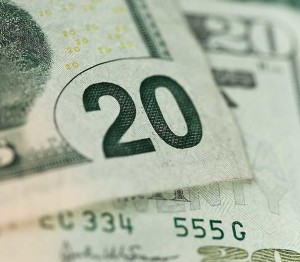Boosting tax rate from 1.0% to 1.4% would mean about $20 increase; social workers, guidance and librarians could be in crosshairs instead
By Mike McGann, Editor, UnionvilleTimes.com

An average propety taxpayer in the Unionville-Chadds Ford School District would see about $20 of additional taxes if the board were to boost the tax rate to the state's Act maximum. Right now, a narrow majority appears to be opposed to that move.
EAST MARLBOROUGH — The Unionville-Chadds Ford Board of Education needs to find about $1.1 million in budget cuts after proposed state cuts in funding, but it seems likely none of those funds will come from increasing local taxes.
During Monday night’s joint board Finance Committee meeting and board worksession, the eight board members in attendance split 4-4 over passing some — $213,087 of the deficit — onto district taxpayers by raising taxes to the full limits as allowed by Act 1, roughly 1.4% percent, as opposed to the previously approved approximate 1.0% in Chester County (the increase tax rate for Chadds Ford Township residents will be around 5% because of changes to Delaware County property values; in 2010 Delaware County taxpayers saw a lower increase than Chester County residents).
And while the personnel cuts being bandied about range from social workers to guidance counselors and even school librarians, plus a number of lesser used academic programs, a majority of the board seems resistant to passing any additional cost onto taxpayers — although initially it seemed as if the board had a 4-4 deadlock.
However, immediately after the open meeting — as the board planned to meet in private session to discuss labor talks and legal issues, Corrine Sweeney, who had been traveling, arrived and said she supported keeping the rate at 1.0%, giving the lower rate a 5-4 margin, at least in theory — as two members supporting the status quo made it clear they might change their minds.
During the meeting, it became evident that the board was very evenly split — and that what might be a 5-4 margin on support of keeping the rate at 1.0% could be shaky and even disappear before it comes up for a vote at the April 25 formal Board of Education meeting.
While there were less specifics than at last month’s special Finance Committee meeting where there might be cuts, Superintendent of Schools Sharon Parker made it clear that it would likely take staff reductions to make the numbers work — especially without a tax increase.
While Knauss made it clear he wants to stay at 1.0%, the impact of that decision seemed to weigh on a number of board members — especially as the cuts are coming because Gov. Tom Corbett surprised virtually everyone with a proposed $612,000 cut in reimbursement for FICA (Federal Insurance Contributions Act) payroll deductions in addition to expected losses of state funding that came from expiring federal stimulus funds.
“On a tax parcel paying $5,000 in taxes, we’re talking about $20 more,” board member Jeff Leiser said. “I’m sorry, to me, 1.4% sounds reasonable.”
“I think we all agreed 1% with the idea that we would have any major cuts from the state,” board member Eileen Bushelow said. “At this point, I support going to the cap.”
Agreeing with Knauss, Paul Price suggested that the district needed to get used to new austerity and that things will get even worse.
“We will need to do more cuts that this in the coming years,” Price said.
But Jeff Helrung argued that Price’s argument was actually the best in favor of taking the full tax increase, suggesting that taking the lower number will reverberate for years, as each year’s maximum tax rate is based over the previous year’s budget and the higher number would give the district the most options in the years to come.
“To have less than 20% of the lost funding come from the taxpayers seems fair,” he said. “Dr. Price’s argument underscores that — just because we know things will get worse, we need to keep our base up, to give us a buffer for the storms to come.”
Board president Timotha Trigg said she was leaning toward keeping the rate at 1.0%, while board Vice President Frank Murphy expressed support to keep it there, but said “I can’t say I’m rock solid.”
Trigg also noted that there are “a lot of questions, here” about what the state will really do in terms of the funding. In terms of the FICA reimbursement, Corbett will need to get legislation through making the change in the formula — and sources in both the Republican and Democratic legislative caucuses suggest that it faces an uphill climb, unless enough mandate relief can be passed to offset the loss of revenue — various changes in state laws that place requirements on school districts without paying for them, such as requiring school districts to bus students to our-of-state private schools, which currently costs Unionville more than $200,000 a year.
Meanwhile the hunt for cuts continues, with the budget expected to be the focus of a town hall style meeting Thursday night at Unionville High School. More than 140 people have already registered to attend the event — and each person wanting to speak will be allowed about two minutes to say their piece on the budget — a major departure from last year’s more conversational, round table event.






